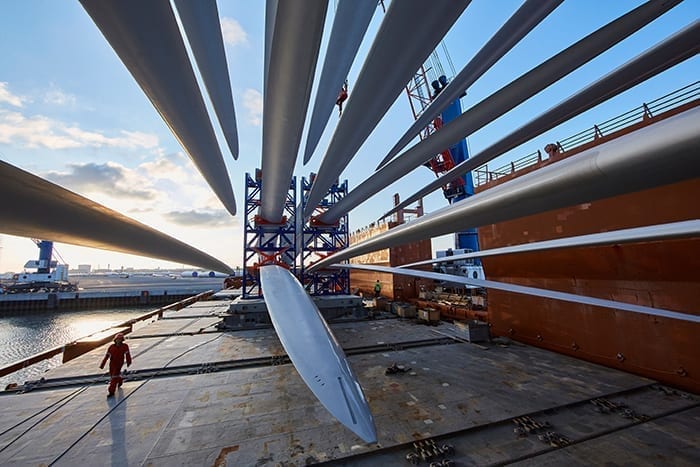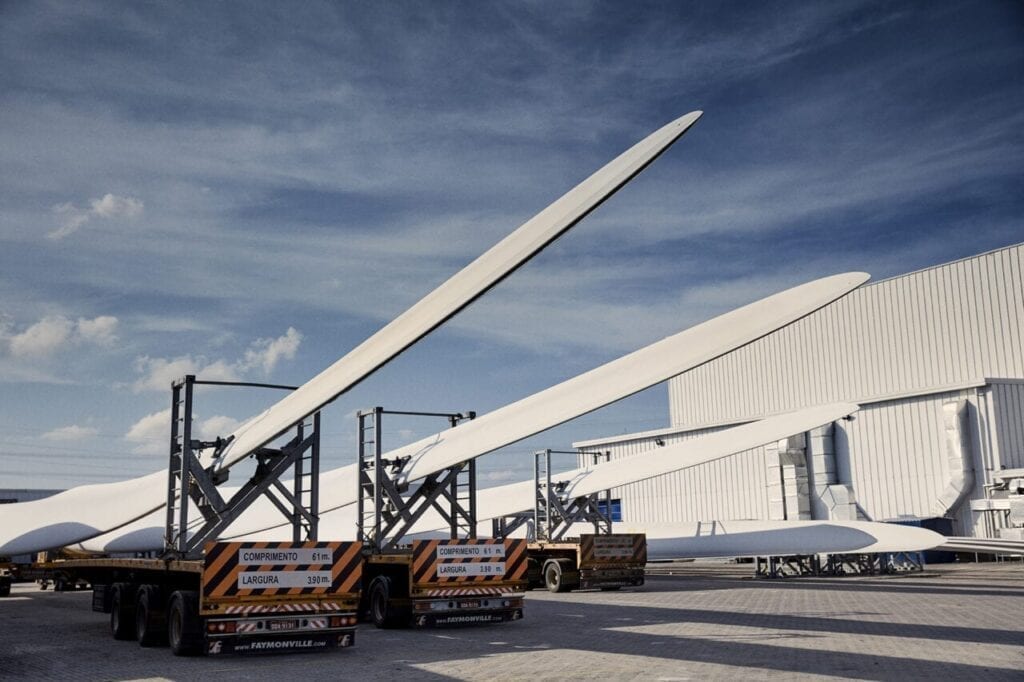GE, Labs Join Project for 3D-Printed Wind Turbine Blades
The post GE, Labs Join Project for 3D-Printed Wind Turbine Blades appeared first on POWER Magazine.

Three GE business units will partner with Oak Ridge National Laboratory (ORNL) and the National Renewable Energy Lab (NREL) to develop and demonstrate an integrated additive manufacturing process for high-performance blade designs as part of a $6.7 million project funded by the Department of Energy's (DOE's) Advanced Manufacturing Office (AMO).
Under the AMO's proposed Additive and Modular Enabled Rotor blades and Integrated Composites Assembly (AMERICA)" funding opportunity, the national labs, GE Research, GE Renewable Energy, and LM Wind Power will seek to deliver a full-size 3D-printed blade tip that will be ready for structural testing. During the 25-month project, the entities will also work to deliver three blade tips that will eventually be installed on a wind turbine.
 These wind turbine blades are heading for the Block Island offshore wind farm. Courtesy: LM Wind PowerThermoplastics a Key Focus
These wind turbine blades are heading for the Block Island offshore wind farm. Courtesy: LM Wind PowerThermoplastics a Key FocusThe three GE business units said on Feb. 5 that the project will focus on a low-cost thermoplastic skin coupled with printed reinforcement." The project's emphasis on thermoplastics is notable because the emerging material could boost efforts to make wind turbine blades recyclable.
NREL, which has spearheaded thermoplastic resin research, says that if combined with thermal welding techniques (also pioneered by collaborative partnerships led by NREL), the resins offer the the potential for stronger, less expensive, and longer wind turbine blades, increasing energy capture, decreasing energy and transportation costs, and increasing blade reliability-critical to advancing the wind energy market."
The project's demonstration of automated 3D printing processes for large-scale structural blade components could also be potentially game-changing for the design of larger rotors, both for onshore and offshore wind turbine technology, NREL has noted. The lab suggests that through disruptions" in labor, capital, and supply chain costs, 3D-printing of blade components could support competitive domestic onsite and modular manufacturing processes." That, in turn, could lead to potentially lower [levelized cost of energy (LCOE)] through highly optimized, supersized blade designs that bypass transportation and logistical constraints."
An Aviation InfluenceNREL and ORNL researchers have explored 3D printing of large-scale wind turbine blades at least since October. Under a project described in an NREL paper last year, the entities planned to design novel sandwich composite solutions" that utilize the latest software and optimization techniques to produce lightweight, topology-optimized, blade core structures. The structural cores required to support a 13-meter [m] technology demonstrator blade will be 3D-printed using large-scale 3D printing technologies at ORNL, and the full-scale blade will be manufactured and validated at NREL," they said.
GE on Friday said it would support that research under the project announced by the DOE on Jan. 13. Todd Anderson, principal investigator at GE Research, noted the company will contribute a vast legacy of materials and composite research which stems from its Aviation division. Through GE's Research Lab, we literally have an entire business portfolio at Wind's back," he said.
GE was the first to develop lightweight composite fan blades for one of its largest commercial jet engines, the GE90, more than two decades ago. A GE Renewable Energy spokesperson explained to POWER that these blades (which are visible on the outside of the engine within the containment case) have provided a deep" understanding of how composite materials behave and function in aerodynamic structures. Today, with our business partners and leading national laboratories, we're bringing that experience and more to deliver a more advanced wind blade to take wind power to the next level of cost and performance," said Anderson.
Torben Jacobsen, senior director of Advanced Technology Systems and Chief Engineering at GE's LM Wind Power subsidiary, said the DOE's $4 million share of project funding would accelerate" the wind turbine manufacturer's advanced design and manufacturing program. We look forward to work with our partners in this program and deliver tangible outcomes including the use of recyclable materials and reduced manufacturing waste," Jacobsen said.
 LM Wind Power blades. Courtesy: LM Wind PowerGE Actively Exploring 3D-Printed Concrete Bases
LM Wind Power blades. Courtesy: LM Wind PowerGE Actively Exploring 3D-Printed Concrete BasesMatteo Bellucci, who heads GE Renewable Energy's Advanced Manufacturing division, meanwhile, lauded the project's potential boost to additive manufacturing, which he said GE Renewable Energy is actively exploring. In June 2020, the company partnered with global buildings material giant LafargeHolcim and COBOD International, a global 3D construction printing company, to co-develop wind turbines with optimized 3D-printed concrete bases that could reach record heights of up to 200 meters.
Traditionally built in steel or precast concrete, wind turbine towers are typically limited to a height of under 100 m because the width of the base cannot exceed the 4.5-m diameter that can be transported by road, without excessive additional costs," GE explained. Printing a variable height base directly onsite with 3D-printed concrete technology will enable the construction of towers up to 150 to 200-m-tall. Typically, a 5-MW turbine at 80 m generates, yearly, 15.1 GWh. In comparison, the same turbine at 160 m would generate 20.2 GWh, or more than 33% extra power," it said.
The three companies anticipate the partnership will produce ultimately a wind turbine prototype with a printed pedestal, and a production-ready printer and materials range to scale up production. The companies noted the partnership already printed their first prototype-a 10-m high tower pedestal-in October 2019 in Copenhagen. By exploring ways to economically develop taller towers that capture stronger winds, the three partners aim to generate more renewable energy per turbine," they said.
Bellucci, who has said 3D printing is in GE's DNA," in June suggested GE is committed to taking full advantage of this technology both from the design flexibility it allows as well as for the logistic simplification it enables on such massive components."
On Friday, he said the highly innovative Advanced Manufacturing and Additive Process" the AMO project will explore could completely revolutionize the state of the art of wind blade manufacturing. Additive manufacturing can bring a step change in cost and performance competitiveness in the wind industry and help GE Renewable Energy support our customers in driving the energy transition farther and faster," he said.
-Sonal Patel is a POWER senior associate editor (@sonalcpatel, @POWERmagazine).
The post GE, Labs Join Project for 3D-Printed Wind Turbine Blades appeared first on POWER Magazine.